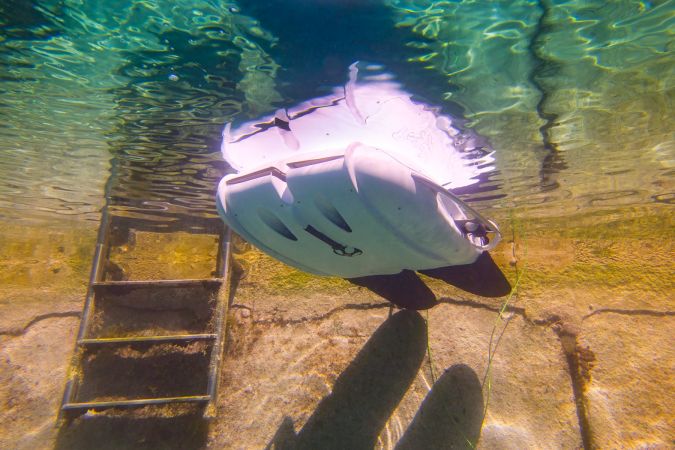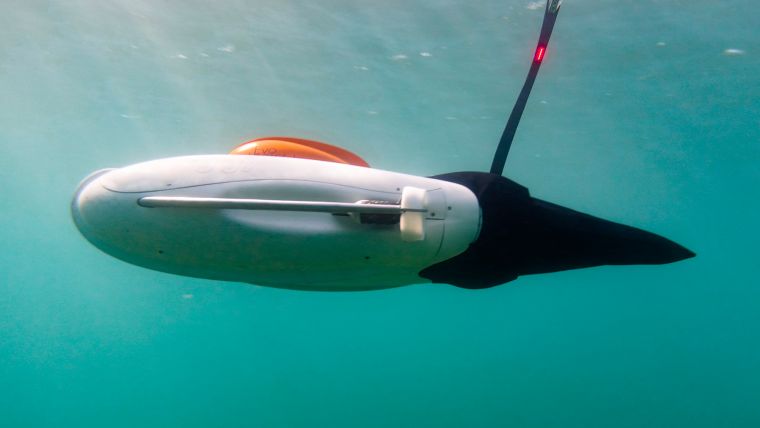How Does the Poggy, the New Bionic AUV, Operate?
EvoLogics from Berlin, Germany, has introduced Poggy - a novel, bionic autonomous underwater vehicle that uses Fin-Ray® technology. The vehicle is being developed as part of the BONUS SEAMOUNT collaborative R&D project and made its first dives at the Breaking The Surface 2019 workshop in early October. Nicknamed Poggy, the AUV is one of a kind; a novel, bionic design with two propulsion thrusters and two independent flexible 'tails' that give the robot mobility features.
Its dual-tail construction is an original idea that stemmed from previous work on EvoLogics’ Manta Ray AUV and its lifelike 'flapping wing' propulsion system. The design was simplified and optimized - the robot lost the wings, and its tail was divided in two. Together with the rigid part of the body, the progressively bendable tails perform as two adjustable hydroplanes that have an overall streamlined shape in every steering position. The new concept facilitates roll and depth control, combined with low drag performance.
Dynamic Climbs and Dives
Both parts of the dual-tail use independent bionic Fin-Ray® drives and allow for precise heave, pitch and roll adjustments, enabling dynamic climbs and dives, levelled gliding and bottom following.

Due to the small size of its basic AUV components, Poggy has an excellent payload capacity and can carry multiple sensors and instruments at the same time. In addition, the dual-tails facilitate manoeuvres that could open new opportunities for sensing and monitoring; the vehicle was designed to keep any desired roll angle and maintain a steady glide, even at very low speeds.
Real-time Sea Surveying
At Breaking The Surface 2019 in Biograd na Moru, Croatia, the EvoLogics team performed the first sea trials of the Poggy prototype as part of a workshop on underwater communication and networking for UUVs. The goal of BONUS SEAMOUNT is to develop innovative autonomous vehicles and integrated sensor systems for complex real-time sea surveying, analysis and monitoring, and then to apply these in the study of submarine groundwater discharge (SGD) in the Baltic Sea. SEAMOUNT UUVs would locate and monitor SGD and associated nutrients and/or pollutants in coastal waters.
Coordinated by EvoLogics, the SEAMOUNT project is funded within the framework of 'BONUS - Science for a better future of the Baltic Sea region', the joint Baltic Sea research and development programme. Project partners are EvoLogics GmbH (Germany), Christian-Albrechts-University Kiel, Institute of Geosciences (Germany), Leibniz Institute for Baltic Sea Research (Germany), Geological Survey of Denmark and Greenland (Denmark), Geologian tutkimuskeskus - Geological Survey of Finland (Finland), Maritime Institute in Gdansk (Poland), and NOA (Poland).














